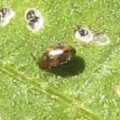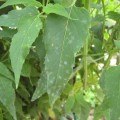[stub]
Botanical Information
Taxonomy
History
Physical Description
Varieties & Cultivars
Categories or Types of Cauliflower
Colors Available
Varieties (link to ../category/cultivars/tag/Cauliflower)
Growth Requirements
Climate & Temperature Requirements
Air Temperature
Soil Temperature
Humidity
Day Length or Light Requirements
Site Conditions Favored
Soil Requirements
Soil Texture
pH
Nutrient Requirements
Propagation
Methods of propagation
Seed
Division
Cuttings
Transplanting or Potting Up
Seed Saving
Planting Out
Bed Prep & Soil Amendments
Bed Spacing
Row Spacing
Planting Depth
Alternative Bed Methods
Container Gardening
Routine Cultivation & Maintenance
Water Requirements
Fertilization Recommendations
Blanching
- When the heads or curds are 1″ – 2″ in diameter, they need to be blanched. You do this by gently tying the leaves up around the heads and securing the leaves together with a rubber band. This will block out the sunlight for another week and a half to two weeks while they finish growing VG
Mulching & Weeding
Pinching or Pruning & Dividing
Support
Winterizing
Companion Planting
Helpful Companions
Harmful Companions
Companion to..
Pests, Diseases & Problems
Common Pests
Common Diseases
Symptoms
Whole Plant
Leaves
Stem/Trunk
Flowers
Fruit
Roots
Harvesting & Storage
Edible Parts of the Plant
Yield
Days to Harvest / Harvest Timing
- Harvest the blanched cauliflower heads when they reach 4″ – 6″ in diameter and they are still compact VG
Harvest Methods
Storage of harvest
Fresh
Canned
Frozen
Pickled
Dried
Cooking
Nutritional Benefits & Values
Toxicity
Cooking
Preparation
Cooking Methods
Recipes (link to …/category/recipes/tag/Cauliflower)
Resources
Information for this article was taken from these sources. (link to …/category/resources/tag/Cauliflower)



